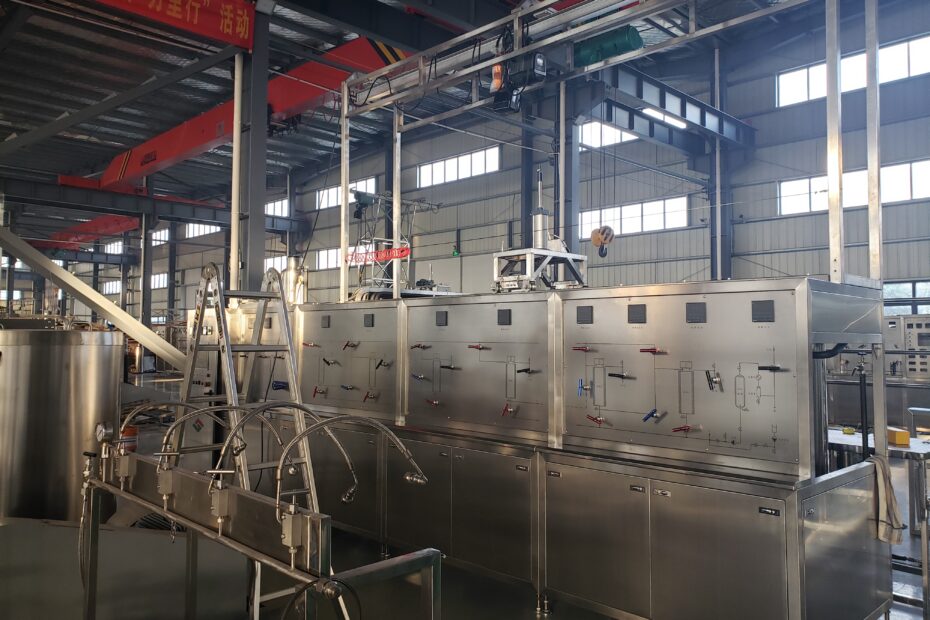Supercritical CO2 extraction is a method used to extract various compounds from natural sources, such as plants, without the use of harmful solvents. This process has gained popularity due to its environmental friendliness and ability to produce high-quality extracts.
Supercritical CO2 fluid extraction technology is a new separation technology in modern chemical separation. It has the characteristics of fast mass transfer rate, strong penetration ability, high extraction efficiency and low operating temperature. This technology has been widely used in medicine, food, chemical industry and other industries.
The main extraction process of supercritical CO2 fluid consists of two parts: extraction and separation. In the extraction equipment, at a specific temperature and pressure, the raw material is contacted with the supercritical fluid. When the dynamic equilibrium of the material components between gas and liquid is achieved, the temperature and pressure are adjusted to separate the extraction product from the supercritical fluid, completing the entire process of supercritical extraction.
The supercritical CO2 extraction device can be used for high-pressure and suitable temperature extraction materials (solids and liquids) under the condition of separator replacement, so that the soluble material can decompose the target product during the extraction and separation process.
Safety requirements for the design of supercritical CO2 extraction system
The supercritical fluid extraction device includes the following components: refrigeration system, extraction system, entrainer circulation system, separation system, CO₂ circulation system and control system, etc.
Designing the extraction system in supercritical CO2 extraction (SFE) devices requires careful attention to safety to prevent accidents and ensure the well-being of operators and the environment. Here are some safety requirements commonly considered:
- Pressure Safety: Supercritical fluids operate at high pressures. Ensure the system is designed to withstand the pressures involved without risk of rupture or leakage. Components such as vessels, valves, and piping should be rated for the expected pressure range.
- Temperature Safety: Supercritical fluid extraction often involves high temperatures. Use materials that can withstand these temperatures without degradation or release of harmful substances. Provide insulation and protective measures to prevent operator burns or accidental contact.
- Pressure Relief Devices: Install pressure relief valves or devices at appropriate points in the system to prevent overpressure situations. These devices should be set to release pressure if it exceeds safe limits, safeguarding against vessel rupture or explosion.
- Leak Prevention: Ensure all connections, seals, and fittings are properly tightened and inspected regularly to prevent leaks. Leakage of supercritical fluids can be hazardous to both personnel and the environment.
- Ventilation: Implement effective ventilation systems to remove any leaked or vented supercritical fluids from the extraction area. This prevents the buildup of potentially harmful concentrations in the workspace.
- Emergency Shutdown Procedures: Establish clear procedures for shutting down the system in case of emergencies, such as overpressure or leakage. Operators should be trained on these procedures and have easy access to emergency shutdown controls.
- Material Compatibility: Select materials for construction that are compatible with the supercritical fluid being used. Certain materials may react with or degrade in contact with specific fluids, leading to safety hazards or contamination of the extracted products.
- Operator Training: Properly train operators on the safe operation of the SFE device, including potential hazards, emergency procedures, and the use of personal protective equipment (PPE) such as gloves, goggles, and protective clothing.
- Regular Maintenance: Schedule routine maintenance and inspections to ensure the system remains in optimal condition. This includes checking for wear and tear, replacing worn parts, and verifying the integrity of safety devices.
- Safety Interlocks: Implement safety interlocks to prevent the system from operating under unsafe conditions. For example, the extraction process may be automatically halted if a pressure or temperature threshold is exceeded.
- Documentation and Labels: Clearly label components, controls, and hazards within the system. Provide comprehensive documentation including operating manuals, safety procedures, and material safety data sheets (MSDS) for all substances used.
- Risk Assessment: Conduct a thorough risk assessment of the entire extraction process, considering all potential hazards and their associated risks. Implement appropriate controls and safeguards based on the findings of the assessment.
Conclusion
By adhering to these safety requirements, the design of the extraction system in supercritical fluid extraction devices can minimize risks and ensure safe operation throughout the extraction process.
